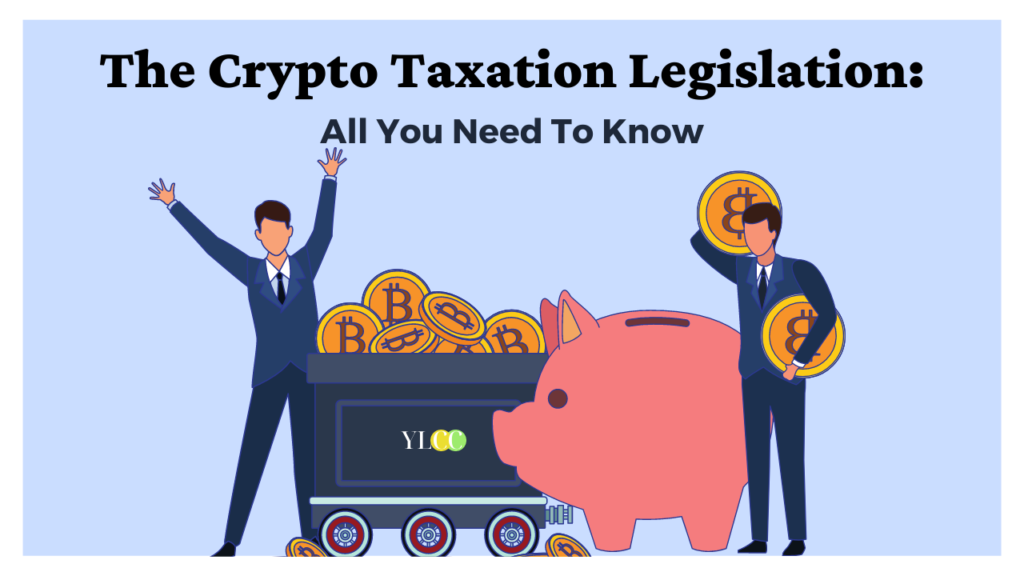
In the Budget 2022, the Hon’ble Finance Minister Mrs. Nirmala Sitharaman has announced revolutionary changes to the virtual asset class. For the first time, the government has officially termed digital assets including crypto assets under “Virtual Digital Assets”. These comprise all the cryptos such as Bitcoin, Ethereum, etc, and other digital assets such as Non-fungible token (NFTs).
In this article, Team YLCC attempts to provide a comprehensive overview of the new framework in crypto taxation in India. Read on!
WHAT ARE VIRTUAL DIGITAL ASSETS?
Virtual Digital Assets are subsets of all digital assets transacted on a blockchain, such as non-fungible tokens (NFTs), cryptos and other virtual assets. The Finance Bill 2022 defined VDAs in the newly introduced Clause (47A) under Section 2 of the IT Act, 1961.
According to the Clause, VDAs are information, code, number or token not being Indian or foreign currency, generated by cryptographic means or otherwise. It is a digital representation of value that is exchanged with or without consideration. VDAs involve a promise or representation of having an inherent value and function as a store of value or a unit of account. It includes its use in any financial transaction or investment. However, VDAs are not limited to investment schemes and can be transferred, stored or traded electronically. VDAs include cryptos and other digital assets because of the phrase ‘generated through cryptographic means or otherwise’ used in the Finance Bill.
Though there are still many discussions that the Indian Government is yet to have with the Indian mass regarding the regulations it will set for ‘Virtual Digital Assets’; according to the Budget 2022 session; these are the pointers any crypto investor should keep in mind:
- Income from the transfer of virtual digital assets such as crypto and NFTs will be taxed at 30% at the end of each financial year.
- No deduction, except the cost of acquisition, will be allowed while reporting income from the transfer of digital assets.
- Loss from digital assets cannot be set off against any other income.
- The gifting of digital assets will attract tax in the hands of the receiver. Losses incurred from one virtual digital currency cannot be set off against income from another digital currency. 1% TDS point should also be mentioned in this list of pointers as it was announced in Budget 2022.
As per Section 206AB of the Income-Tax Act, 1961:
- If any user has not filed their Income Tax Return in the last two years and the amount of TDS is ₹50,000 or more in each of these two previous years, then the tax (TDS) to be deducted for Crypto related transactions will be at 5%.
- If an order is placed before 1st July 2022, but the trade is executed on or after 1st July 2022, TDS provisions will apply.
UNDERSTANDING THE TAXATION
The flat income tax rate is applicable to retail investors, traders, or anyone transferring crypto assets in a given financial year with no distinctions between short-term and long-term gains. 30% tax rate will be levied on any profits made from the transfer of virtual assets. The 30% crypto tax rate will be the same irrespective of the nature of income i.e. it does not matter if it is an investment income or business income and is irrespective of the holding period.
Example 1
If an investment of INR 1,00,000 was made in crypto at the beginning of FY2022, and by the end of FY2022, the crypto was sold for INR 1,50,000, a flat 30% crypto tax is applicable on income gain of INR 50,000. As an investor, you will be liable to pay INR 15,000 (plus surcharge and cess) as tax on crypto income in that financial year.
It should be noted that any income arising on transactions relating to crypto shall be taxed only at the time of transfer of such crypto i.e. if a person continues to hold the asset, the holding is not taxable on such unrealized gains.
Example 2*
*It is to be noted that in this example, we are only adjusting the losses in the same financial year from the same source of income and not setting off prior period losses or losses from any other business.
WHY IS CRYPTO BEING TAXED SUBSTANTIALLY?
The Central Government has made it clear that it is viewing trading in cryptocurrencies on a par with other speculative activity such as lottery or gambling. That is the reason why the tax on income is much higher than the capital gains tax charged on other capital assets. The amendment to the Finance Bill further clarified that cryptocurrencies cannot be construed as capital assets. Disallowing setting-off of losses, not allowing deduction of any expenses and taxing gifts are punitive and another way of telling investors to stay away from these assets.
When the crypto taxation was first announced, the stakeholders in the cryptocurrency space including trading platforms and wallet providers are clearly unhappy. Initially, they tried to give the spin that the government’s move to tax them makes these assets legal. But various government officials have denied this interpretation stating that taxing cryptocurrencies does not amount to legitimising them. The crypto industry then lobbied with the Centre to roll back the taxes. Now that the Finance Bill has been passed, these players need to get ready to face the changed circumstances.
HOW TO DEAL WITH CRYPTO TAXATION
Ever since the Budget session of 2022, due to a lack of definite clarity, there have been confusing details going around on the internet. To help clear out your doubts, here are the steps you need to follow for your 30% crypto tax. The tax will be applicable at the end of this financial year; i.e. during the assessment year of 2023-24.
- Start from the fresh sheet, taking into consideration all the crypto assets that you’ve owned before April 2022.
- Keep a record of the INR amounts during any sale of your crypto assets. The tax will be paid in INR and not using any cryptocurrencies.
- If there are any profits on virtual digital assets, they have to file returns by filing the form known as Income Tax Return 1, 2, 3, or 4, as applicable.
- Institutions or businesses have to file returns by filing the form known as Income Tax Return 5 or 6, as applicable.
YLCC would like to thank its Content Team for their valuable insights in this article.






